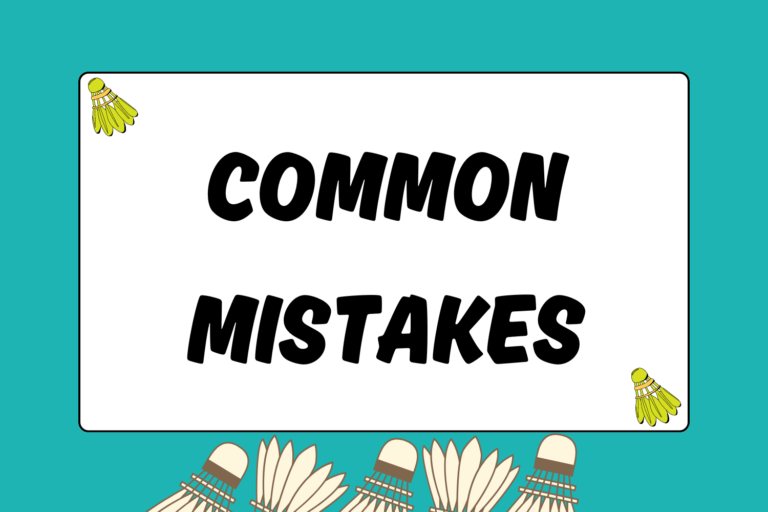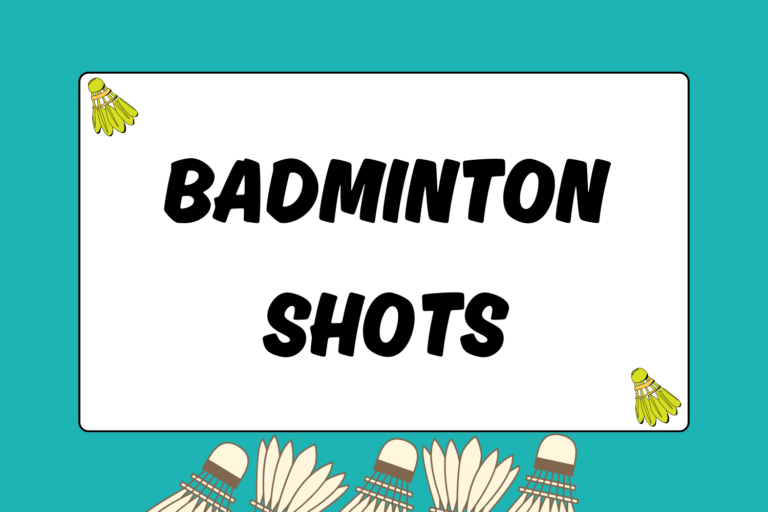Playing doubles can either be a huge joy or a huge pain. Not being on the same page as your partner not only affects chemistry but can be a safety issue. The worst injuries in badminton result from miscommunication.
In this guide, you’ll learn the basic tactics and communication tools to make your doubles experience safe and enjoyable.
Service and Boundary Rules
Doubles service and boundaries differ from singles. The service court is defined by the doubles sideline, center line, short service line, and long service line. After service, the boundaries are extended to the doubles sidelines and baselines.
While the server and receiver must be inside the appropriate service box, their partners can be anywhere on the court. The order of service may be complicated at first, but soon it will become instinctive. The serving team will keep service until they lose a rally. Service changes hands only when the serving side loses the rally. For example, if team ‘A’ is serving and loses the rally, then team ‘B’ serves for the next rally.
After the service changes hands, the team must figure out which player will serve. As a rule, one player cannot serve in consecutive service possessions. For example, if Partner A served last, then when that team regains service, Partner B will serve. Service will be taken from the right service court if a team’s score is even. Conversely, service will be taken from the left side when a team’s score is odd.
Doubles Formations and Rotations
While proper footwork is essential in badminton, the rotation with your partner is even more crucial. Rotation is basically moving in unison with your partner to cover the entire court. In badminton, there are two basic formations doubles players switch between:
- Front-back (offensive): This formation has one player covering the front half and the other covering the back half of the court. The base point for both players will be somewhere along the center line.
- Side-side (defensive): In this formation, you and your partner will be responsible for each half of the court divided by the center line.
Knowing where to be on the court goes hand in hand with knowing when to be there. Rotation in doubles is vital for any successful team.
For example, if the opponent clears to your partner, you should move toward the front and cover that half of the court. If your partner smashes, then you will be in a prime offensive position to continue the attack. If your partner clears instead, you should have enough time to return to the defensive formation.
Pick on the Weaker Player
Doubles play has numerous variables to consider with two players on both sides of the net. There’s an intricate web of comparisons you must make to create the best plan of attack. As you play, you should:
- Analyze the main strengths and weaknesses of each player, including yourself.
- Compare the characteristics of each player to every other player.
- Determine which player on each team is more skilled.
From here, you should be able to make strategic decisions to give your team an advantage. The more advanced player should keep the shuttle on his side of the court when on the defensive end. If he is on the right side, returning the shuttle to the same side will make it more difficult for the opposing team to attack the weaker partner. This is because the opposing team must hit a cross-court shot, which takes longer because it must travel farther.
Also, he should stay in the back on the offensive end. This is a general tactic because the stronger player shouldn’t force his way to the back every time. Instead, he should maintain the offensive formation by attacking every shot.
Your team should do its best to pick on the weaker of the two opponents. A team is only as strong as its weakest link. You should exploit the weak link by forcing him to take more shots. This should also tire him out quicker than if the shots were spread evenly between him and his partner.
Communication
Solid communication is an underlying characteristic of any good team. The chemistry and nonverbal cues you and a partner build will never replace verbal communication. Starting with good habits will help your team avoid confusing situations.
Shots down the middle often cause the most confusion because each player is roughly the same distance away from it. If you have to, speak with your partner before a game to decide who will take shots down the middle and when your team will do so.
Having good communication can also prevent injuries or accidents. A racket striking any part of your body will not feel good. Also, smacking rackets against one another is a surefire way to cut the racket’s life short. These situations are absolutely avoidable if you remain vocal and call out whose shot it is and what formation to utilize.
While communication during rallies is critical, do not forget to communicate in between, as well. Synchronizing strategies and even checking in on how your partner is doing will only help your team as the game progresses.
Offensive and Defensive Responsibilities
In badminton, your goal is to score points any way you can. The easiest way is to attack. You and your partner should aim to maintain your offensive position as much as possible by attacking with drops, drives, and smashes.
On the defensive side, aim your shots toward the corners of the court. This forces your opponents to hit the shuttle up in the air, allowing your team to switch to the offensive formation.
Double or Nothing
Chemistry with another player is not something to take for granted. The easiest way to develop this is to choose a partner with whom you enjoy playing. As long as you enjoy yourself, teamwork and chemistry will come naturally.
Soon, you and your partner will be able to rotate and cover each other without thinking!





